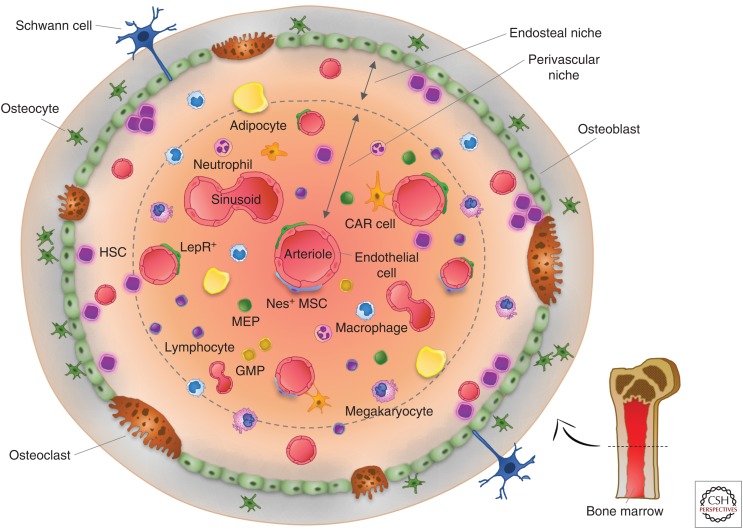Figure 2.
The bone marrow (BM) niche. Hematopoietic stem cells (HSCs) reside inside specialized microenvironments or niches within the BM. The organization of the BM niche and its association with HSCs are depicted within the two main niches: the endosteal and perivascular niche. The principal cell types of the endosteal niche are osteocytes, osteoblasts, and osteoclasts, with osteoblasts being the main cells supporting myelopoiesis throughout the release of soluble factors. Osteoblasts in the endosteal niche as well as endothelial cells, leptin-receptor-expressing perivascular cells (LepR+), CXCL12-abundant reticular (CAR) cells, and Nestin+ mesenchymal stem cells (Nes+ MSCs) in the perivascular niche, secrete the CXC-chemokine ligand 12 (CXCL12), which controls HSC homing, retention, and repopulation of HSCs. Osteoblasts, Nestin+ MSCs, and mainly perivascular cells release stem-cell factor (SCF), a key niche component that maintains the homing, retention and repopulation of HSCs.

